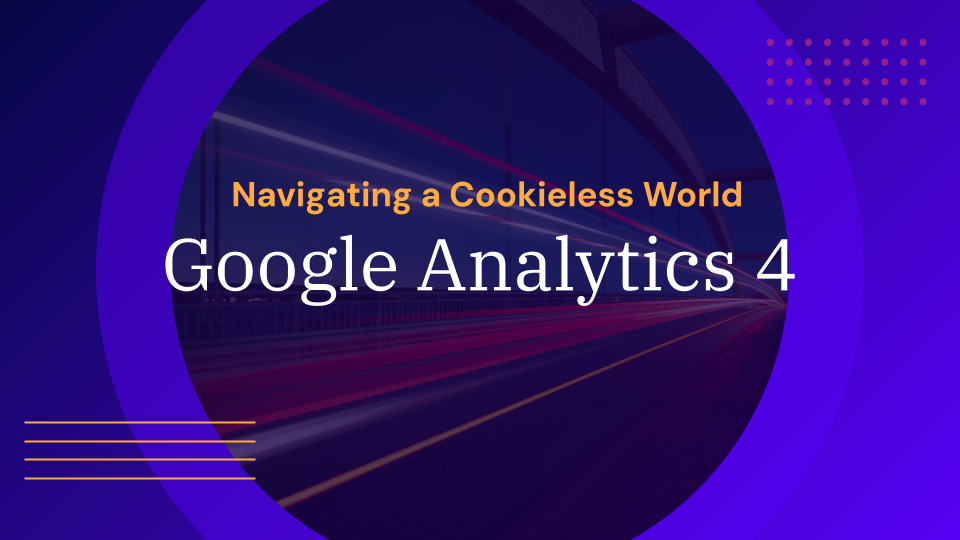
Two Concrete Solutions for Marketers Once Third-Party Cookies Are Gone
Organizations will soon have to rely on their own first-party data for targeting and ad buying. The most common advice for marketers that depend on third-party cookies is to work on a first-party data strategy. This is necessary not only to reach target audiences, but it’s also a prerequisite for running marketing solutions powered by AI and machine learning (after all, if you can’t walk, you can’t run). However, for many organizations, it’s practically impossible to build a large enough first-party data stack. Such parties require two concrete solutions.
First-party data collection is not for every organization
Building a first-party data stack of sufficient size and quality is no easy feat. Realistically, not every organization will be able to master it. Consider a food manufacturer that sells its products exclusively through supermarkets. This manufacturer has no internal sales channels, which means they don’t own any portals that end-customers can log into. This makes their end-consumer databases incredibly limited, which means they’re heavily reliant on supermarkets (third-party data) to effectively identify and target the right audiences for them.
Like many other companies, this food manufacturer depends on third-party data to effectively run its businesses. It can only collect first-party data sparingly, through initiatives such as loyalty campaigns, savings programs or temporary promotions. However, that will not be enough for an effective marketing strategy, meaning that these efforts are not enough for long-term success. But now that third-party cookies are going away, how will businesses in similar situations manage?
Currently there are two solutions worth noting:
- Data Clean Rooms
- Google’s Privacy Sandbox
Data clean rooms enrich incomplete first-party data through business partner data
Data clean rooms enable two parties doing business with each other to compare and enrich their own first-party data without accessing each other’s data. The supermarket chain can therefore give the food manufacturer more information about what kind of audience groups are buying its products, without actually having to divulge the personal information of individuals within those groups. This makes data clean rooms compliant with modern privacy laws.
“With a data clean room, advertisers and retailers can share insights with each other, learn more about their target audiences, enrich customer segments, and – if identifiers can be matched – get even broader insights for conversion. This all happens without a single cookie involved, and without that data being traceable back to individuals.” – Boj Holslag, Director of Publishers and Retail Media, Incubeta.
Data clean rooms can be a blessing for parties that collect some first-party data, but don’t have enough information to do extensive targeting. By enriching data through a data clean room, businesses are able to better reach their target audience and optimize their products and marketing strategies.
On the other hand, data clean rooms are not the magic answer to everything. For example, you can only use them to further enrich data from customers you already have. If you only have a fragment of your target audience mapped via first-party data, then you can only enrich that fragment. Moreover, you are always at the mercy of the quality of the first-party data of your business partner – often a retailer or publisher. So working with data clean rooms offers opportunities, but does not give you full control over your digital marketing. Moreover, it is not a solution for organizations that have little or no first-party data.
Google promises solutions with its Privacy Sandbox
To help marketers keep more control over their digital buying, Google opened its Privacy Sandbox to the general public last September, after a run-up of several years. The Privacy Sandbox allows organizations to target audiences (limited to logged-in Google Chrome users), without the need for third-party cookies.
For cookie-free retargeting and conversion measurement, Google has created the “Protected Audience API” and the “Attribution Reporting API,” both based on Chrome signals but without the marketer being able to recognize individual identifiers.
Targeting audiences based on Google data can be done through the “Topics API” (formerly FLoC). The Topics API works with so-called cohorts: groups of Chrome users with similar characteristics, small enough to use as valuable targets, but large enough to safeguard the privacy of individual users. Google anticipates great results – potentially up to 95% of the ROI marketers get now from cookie-based advertising. Problem is, though, no one knows exactly how the Topics API works under the hood.
In fact, researchers at KU Leuven recently concluded that the Privacy Sandbox is a kind of “black box”; which means there is no way to know with absolute certainty whether the results returned by Google are correct. Previously, you could see, measure, and check this independently as a marketer. However, this “black box” element now makes sense, because if the operation were verifiable, then that would have to mean that the privacy of Chrome users can’t be guaranteed.
As a business, when the Privacy Sandbox is rolled out to all Chrome users in 2024, you are meant to be able to access your audience and results from Google in a similar way to today. You won’t be able to perform fine measurements on the progress of your campaigns based on individual customers, but you will get a “big mountain” of final results from Google. It now remains to be seen which parties in the market will embrace this new set of solutions.
That is, of course, assuming that the Privacy Sandbox works as intended – which no one outside Google can verify at this point in time – and whether the market will embrace this new solution.
A working Privacy Sandbox makes Google more powerful than ever
If the Privacy Sandbox is a success, it is plausible that it will significantly increase Google’s power. Google will then have end-to-end service under one roof:
- The most widely used browser
- The largest data stack
- The most widely used search functionality
Even logging into external sites and applications will become a Google service with the introduction of Passkeys.
When governments and authorities initiated stricter privacy legislation years ago, one of the principles was that large data processors, such as Google, would become somewhat less powerful. With the transition from cookies as an open standard to an ecosystem controlled by Google, ironically, the opposite now appears to be happening.
This article was originally published on Emerce.nl.
Check out how Incubeta can help you get privacy ready in 2024.
Browse: Industry Insight
Read Next
Find out how we can help you
With offices around the world, we can build a team perfect for your needs.

